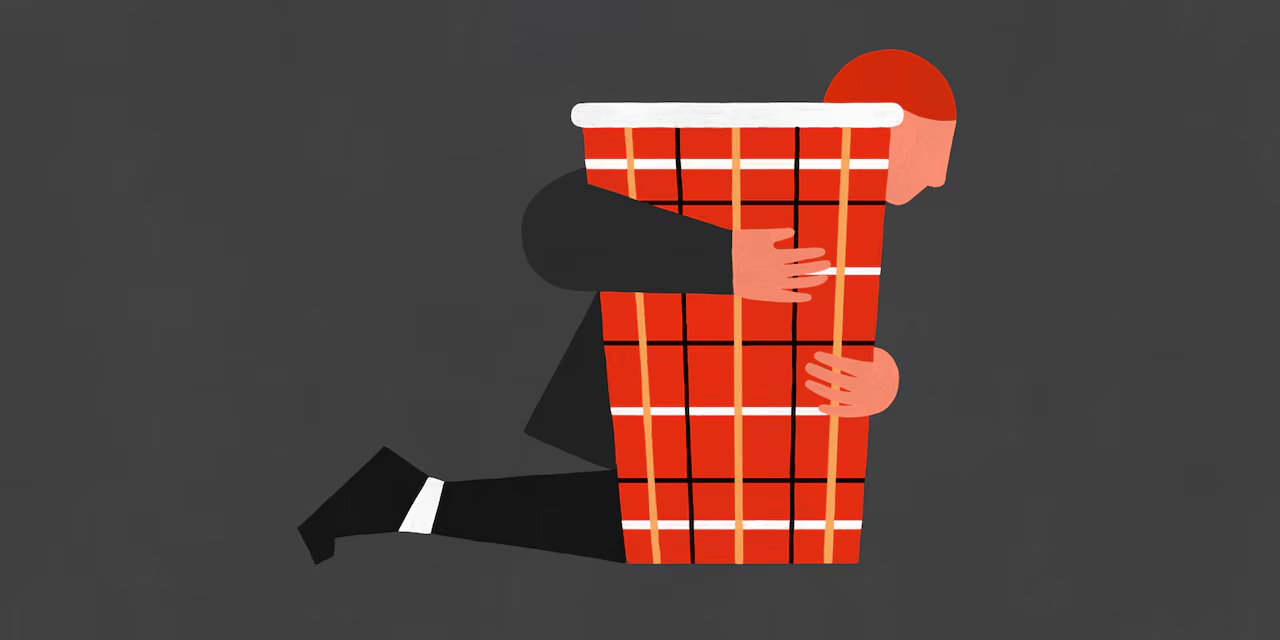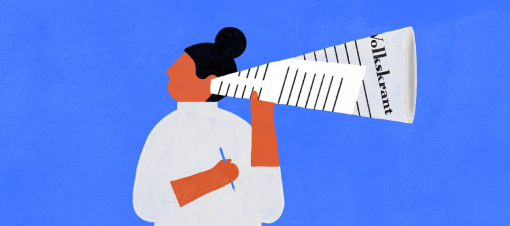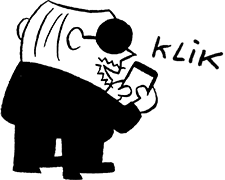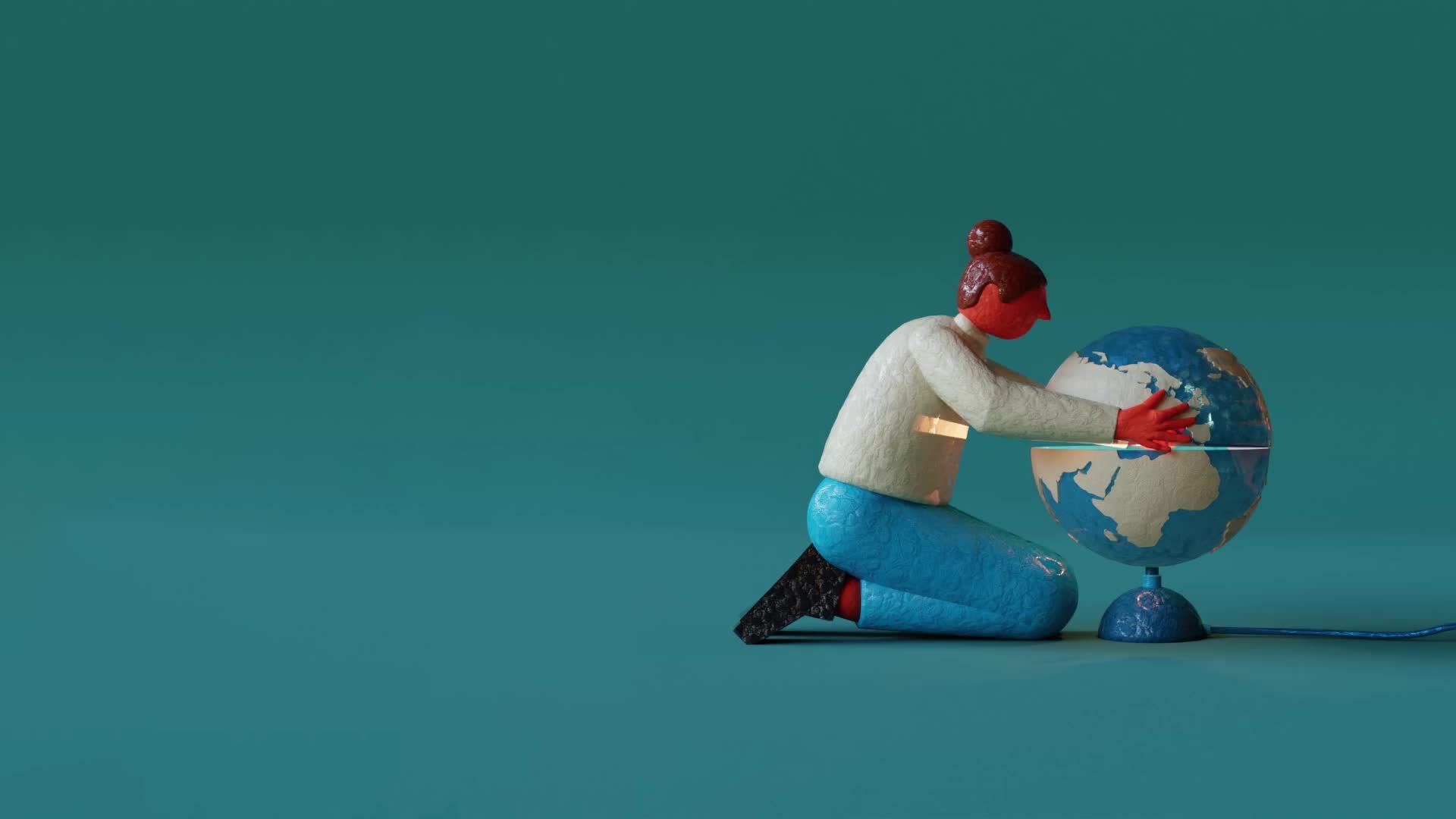De Volkskrant Annual Editorial Report 2024
What factors did the editorial team at de Volkskrant consider when reporting on transgressive behaviour? How was AI used?
Read about what happened last year
Writing about
misconduct
Since the revelations about Harvey Weinstein, investigative stories about misconduct have evolved into a new genre of journalistic writing. De Volkskrant’s legacy of coverage started in 2015, predating the #MeToo movement, with a story about abuse of authority and misconduct at Amsterdam’s Academy of Theatre and Dance. Articles about TV chat show DWDD and NOS Sport followed.

T
hese stories are among the most complex in journalistic writing. First of all, the evidence is hard to come by. As the accused and whistleblowers (or the victims) in many cases provide contrasting accounts of the same events, it can often be a challenge to establish the facts. Most whistleblowers prefer to remain anonymous out of shame or fear of repercussions. Journalists must therefore verify each detail from multiple sources, backing up every piece of evidence with a digital or physical paper trail of instant messages, calendar entries and e-mails. A story only really starts coming together once patterns of repeated misconduct are identified.
Even so, the investigative team and their supervisors will continue to ask critical questions and seek nuances, in an attempt to avoid tunnel vision. Given what is at stake for all involved, journalists must be meticulous in their recounting of events and carefully weigh up different readings and interpretations.
Privacy represents the greatest dilemma in this branch of journalism.
Does the public interest of publishing an article outweigh the reputational damage to the parties involved?
Rather than engaging in a witch hunt, as some people seem to believe, the editing team is preoccupied with establishing broader links, such as failures in the system. The newspaper’s coverage of DWDD focused on its toxic work environment, which had resulted in dozens of employee absence cases, while our stories about NOS Sport concentrated on a rogue work culture of bullying, sexism and exclusion. Some misconduct had been ongoing for years.
Managers at both organisations were aware of the issues, but didn’t step in. Our editing team sought to expose the workings of those enabling structures, as we believed this would contribute to the wider debate on misconduct in work settings. The DWDD’s excuse of “playing in the Champions’ League” is reiterated by its supporters. A culture that gives free rein to sexist jokes and inappropriate behaviour, and downplays concerns expressed by women, also acts as a mirror for countless other workplaces.
However, it is nigh-on impossible to completely shield the accused from reputational damage. As long as no specific allegations are made, practically everyone could be a suspect; people will inevitably be traced or mentioned by name.
With so much at stake for those involved, journalists must be meticulous in their recounting of events and carefully weigh up different readings and interpretations.
Sometimes, a story confirms a known pattern of behaviour
Each story of misconduct invites a stream of fresh leads.
Our editors are selective about which ones to pursue, and ask numerous questions in the preliminary stages: does this lead mention a new type of misconduct or is it happening in a sector where you’d least expect it? Are reports being acted on? Is there a cover-up? Does the public interest of exposing this case outweigh the possible reputational damage to those involved?
We often decide not to initiate an investigation. Some cases share more traits with a labour dispute than misconduct. In others, an authoritative body will carry out an employee investigation themselves, thereby diminishing the journalistic need to shed light on events. And sometimes, a story confirms a known pattern of behaviour and holds no added value for the wider debate.
An example of a new story is last year’s coverage of Wim Hof, the health guru who subjected his family to years of physical and emotional abuse. Our editors picked up the story because it shed light on a broader problem in society that often takes place behind closed doors: domestic abuse.
And sometimes, a story confirms a known pattern of behaviour and holds no added value for the wider debate.
Annieke Kranenberg
Deputy editor-in-chief of de Volkskrant

Accountability at de Volkskrant: a story of journalistic dilemmas
Pieter Klok
Editor-in-chief of de Volkskrant

Should we use the term ‘genocide’ to describe the war in Gaza? Should we accept AI-written letters from our readers? Why did de Volkskrant originally report that the Dutch government’s VAT rise would go ahead as planned? Is de Volkskrant’s journalism truly independent? Why have we chosen to interview Jan van de Beek, the lone right-winger among migration experts, so often?
Serious journalistic dilemmas are a near-weekly occurrence. They used to be managed by the news Ombudsman, but for a few years now, they’ve fallen to the editor-in-chief. The media is often considered a member of the fifth power. And in a healthy democracy, power entails accountability. We are no exception.
De Volkskrant has traditionally attracted a large following of critical readers, whose numbers have only grown thanks to social media. A portion of the Dutch population no longer view traditional media such as de Volkskrant as the gatekeepers of power, but as its lackeys.
There is a growing number of readers who consume only one of our articles, but use that one fragment to form a sweeping view of de Volkskrant. Among readers who don’t know us is a deep-held belief that de Volkskrant pursues a political agenda that may or may not be set by its owners. These groups are hard to persuade otherwise, no matter how open or honest you are.
Each Saturday, I write a weekly news review aimed mainly at loyal readers, whose e-mails I answer as a matter of priority. The majority of dilemmas are covered by our Volkskrant protocol, which sets out detailed procedural rules.
I often find myself repeating the company line: our journalists strive to exercise their craft with precision, collecting and collating facts as best as they can. However, by its very nature, this line of work is very much open to criticism. In the words of the famous newspaper publisher Phil Graham: “news is a first rough draft of history”.
subscribers supporting our editors
A
t de Volkskrant, we believe we can improve our coverage by tailoring it to people’s needs, concerns and interests. Our readers themselves can be our eyes and ears, broadening our outlook and changing our perspective.
This led us to launch ‘Open Redactie’ (Open Editing): a newsletter sent out twice a month asking around 6,000 subscribers for their input on a certain topic, from politics (asylum and migration) to society (old-age dementia) and everything in between. Some questionnaires are also open to non-subscribers.
We put forward concrete suggestions for articles and ask open questions to find out from respondents whether we have included everyone’s voice or need to explain a topic in greater detail. We discuss the responses with the portfolio holder, themselves closely involved in compiling the questionnaire, and share our thoughts with respondents.

Meld je nu aan!
“We send out a newsletter twice a month asking 6,000 subscribers for their input on a certain topic.”
One of the things we learn time and time again is that our average subscriber is less familiar with certain subjects than we assume. An editor’s knee-jerk reaction to reader input often goes along the lines of: “But I’ve already explained that to you!”. True, but that one article is read only by a few readers – the explainer is often ‘buried’ in a broader analysis.
Going over the basics in new articles does help; but sometimes, readers just need a summary of the big issues and links to further reading in follow-up articles.
Gert-Jan van Teeffelen
Deputy editor-in-chief de Volkskrant

AI as a tool in the newsroom
Our research department is increasingly applying innovative techniques to uncover newsworthy stories. For some time now, we’ve been successfully experimenting with artificial intelligence (AI). One such experiment took place back in 2023, using satellite images to locate Russian trenches in Ukraine.
This year, we took our AI journey to the next level in a story about the detrimental effects of gold mining in Suriname, which currently accounts for 70% of the country’s exports. We used AI to compare satellite images from the 1980s onwards with modern images and found that the software was able to identify gold veins. This experiment revealed that gold mining in Suriname now covers around 650 square kilometres, with disastrous effects on humans and the environment.

Volkskrant
How high is our daily reach? How many articles do we write in a day and what rating does De Volkskrant get from its subscribers?

